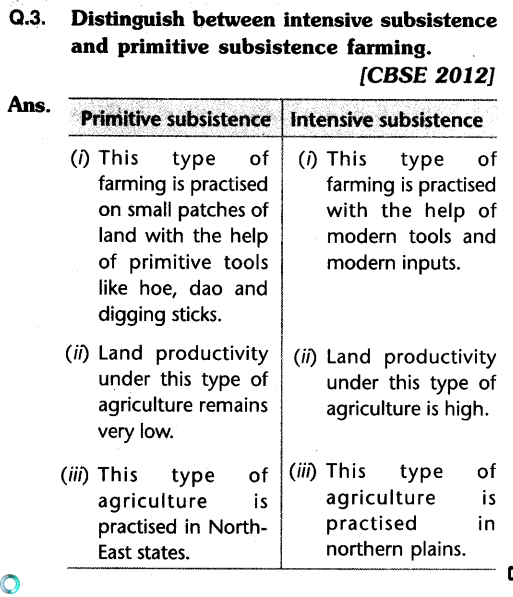An Extensive Take A Look At the Obstacles and Advantages of Modern Agriculture
Modern farming stands at the crossroads of development and sustainability, offering a multitude of challenges and chances. The course forward requires a cautious examination of these characteristics, welcoming stakeholders to think about the possibility for transformative modification in farming methods and plans.
Technological Improvements in Farming
Advancements such as accuracy automation, biotechnology, and agriculture have actually changed conventional farming methods, enabling for even more lasting and lucrative procedures. Precision farming uses GPS technology, sensing units, and data analytics to enhance field-level management relating to plant farming.
Automation in farming has better pushed the industry ahead, with the introduction of autonomous tractors, drones, and robotics. These innovations lessen labor needs and enhance functional speed, permitting prompt growing and harvesting. Drones, particularly, offer beneficial aerial imagery and data, assisting farmers in keeping track of plant wellness and identifying concerns early.
Biotechnology has actually also played an essential duty ahead of time farming techniques. Genetically changed microorganisms (GMOs) have been developed to improve crop resistance to conditions and parasites, reduce dependence on chemical therapies, and improve dietary web content. This technology adds to food safety and security and meets the needs of a growing international population. Jointly, these technical innovations have actually prepared for a much more sustainable and resilient farming future.
Ecological Challenges
Agriculture deals with numerous environmental challenges that intimidate its sustainability and productivity. One of the main issues is the deterioration of soil health because of intensive farming methods that deplete important nutrients and bring about disintegration. The overuse of chemical fertilizers and pesticides additionally aggravates this issue, infecting water resources and lowering biodiversity. As a result, the long-term feasibility of farming land is endangered, demanding the adoption of more sustainable methods.
Water shortage is an additional considerable difficulty, especially in areas where agriculture heavily counts on irrigation. Environment modification is intensifying this problem, changing precipitation patterns and raising the regularity of dry spells. Efficient water monitoring systems, such as drip irrigation and rain harvesting, are important to minimize these impacts, but their application remains uneven throughout different regions.
In addition, agriculture is both a factor and a target to environment modification. Attending to these ecological obstacles is essential for making certain a sustainable farming future.

Economic Effects
The financial effects of modern agriculture are profound and multifaceted, influencing both local and worldwide markets. Breakthroughs in innovation and production approaches have actually considerably enhanced farming productivity, leading to more efficient food supply chains and lowered prices for customers.
However, these advantages are not without challenges. The capital-intensive nature of modern farming requires significant investment in equipment, fertilizers, and genetically modified seeds, which can be financially burdensome for small-scale farmers. This typically leads to raised financial obligation and monetary vulnerability, potentially leading to the loan consolidation of farms and the loss of rural source of incomes. In addition, worldwide market fluctuations can influence the productivity of agricultural exports, making economies reliant on agriculture susceptible to economic instability.
Additionally, aids and profession plans in established countries can misshape market rates, impacting affordable balance and potentially disadvantaging farmers in developing nations. Generally, while modern agriculture drives financial growth, it likewise requires browsing complex monetary landscapes to make sure lasting and equitable advancement.
Social Effects
While modern-day agriculture has brought around considerable advancements, it additionally presents numerous social effects that require consideration. As business farming entities progressively control the farming landscape, smaller sized farms commonly battle to compete, leading to the disintegration of rural neighborhoods and typical farming methods.

Such methods may also limit customer selections and minimize the capacity of regional areas to regulate their food sources. As these social ramifications unfold, it comes to be critical to resolve them to guarantee sustainable and fair agricultural growth.
Future Instructions
Looking ahead, a number of encouraging opportunities for modern-day agriculture can attend to the difficulties faced today while fostering lasting growth. Advancements in technology, such as accuracy agriculture, supply the possible to maximize resource use and boost effectiveness. By using data analytics and artificial intelligence, farmers can make educated choices regarding crop management, resulting in minimized input costs and lessened ecological impact. Moreover, the combination of renewable energy resources you can try here right into farming practices can substantially lower reliance on nonrenewable fuel sources and contribute to lower greenhouse gas emissions.
Biotechnology also holds immense assurance for the future of agriculture. Genetically changed organisms (GMOs) and genetics editing strategies, like CRISPR, might enhance crop durability versus environment change, pests, and diseases, therefore boosting food safety. Additionally, branching out plant selections to consist of even more nutrient-dense and climate-resilient choices can boost both environmental security and human nourishment.

Verdict
Modern farming, defined by technical improvements, provides both possibilities and obstacles. commercial farming vs subsistence farming. Attending to these complexities requires a change in the direction of lasting techniques that balance productivity with ecological stewardship and social equity, therefore making certain a resistant future for global farming systems.
Modern agriculture stands at the crossroads of development and sustainability, presenting a plethora of obstacles and chances. Additionally, international market fluctuations can influence the productivity of farming exports, making economic climates reliant on agriculture at risk to economic instability.
Furthermore, the extensive usage of technology and mechanization in agriculture has led to a decrease in agricultural work opportunities.Looking in advance, numerous appealing opportunities for contemporary farming could resolve the difficulties encountered today while promoting sustainable development. commercial farming vs subsistence farming.Modern farming, characterized by technical improvements, presents both possibilities try this website and challenges